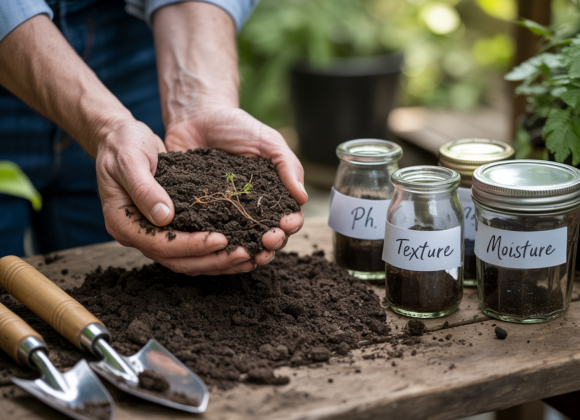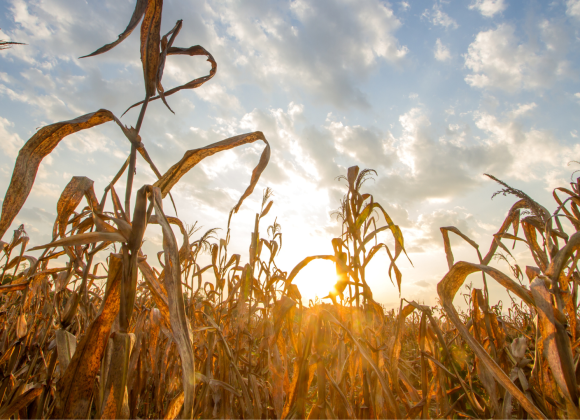Organic farming is more than a trend—it’s a global movement toward healthier food and a sustainable environment. But without the use of synthetic chemicals, how do organic farmers manage the pests that threaten their crops? Enter sustainable pest management—a smarter, greener way to protect plants while preserving the ecosystem.
In this blog, we’ll explore the most effective pest control methods used in organic farming, how they work, and why they matter for the future of agriculture.
What Is Sustainable Pest Management?

Sustainable pest management refers to environmentally friendly strategies that control harmful pests while minimizing risks to humans, animals, and beneficial insects. Unlike conventional farming, organic systems avoid toxic pesticides and focus on long-term prevention and balance in the ecosystem.
The goal? Healthy crops without harming soil, water, or biodiversity.
Why Is Pest Control a Challenge in Organic Farming?
Pest infestations can destroy yields. Without synthetic chemicals, organic farmers need to be proactive and resourceful. They rely on a combination of cultural practices, biological control, habitat management, and natural treatments to keep pests in check.

Some common pests in organic farms include:
- Aphids
- Caterpillars
- Whiteflies
- Nematodes
- Fungal pathogens (like mildew)
Top Sustainable Pest Management Methods
1. Crop Rotation & Polyculture
Rotating crops and planting a variety of species can significantly reduce pest pressure. Many pests are host-specific, meaning they thrive on particular crops. By changing the crops planted in a specific area each season, these pests lose their preferred food source, causing their populations to decline naturally. This method not only helps break pest and disease cycles but also reduces reliance on chemical pest control methods. Additionally, crop rotation improves soil fertility and enhances microbial activity, promoting healthier, more resilient farming systems.
Example: Legume-cereal rotation (e.g., planting lentils after wheat) can suppress soil-borne pathogens and enrich the soil with nitrogen.
🔗 Read more. What is crop rotation, and why is it important?
2. Biological Control
Biological control means using helpful living things—like insects or bacteria—to fight off harmful pests in a natural way. For example, ladybugs eat plant-damaging insects like aphids. Tiny wasps called Trichogramma lay their eggs inside pest eggs, stopping them from hatching. A natural bacteria called Bacillus thuringiensis (or Bt) kills caterpillars and mosquito larvae without hurting other creatures. And tiny worms called nematodes live in the soil and attack pests like grubs and weevils. This method is safe for the environment and works well both above and below the ground.
Benefits:
- Highly specific to target pests.
- Safe for pollinators like bees and butterflies.
- Helps maintain ecological balance.
3. Neem Oil & Plant-Based Sprays
Natural sprays made from plant derivatives are widely used in organic farming to deter pests without toxic residues.
Popular Natural Pesticides:
- Neem oil: Acts as an insect repellent, growth inhibitor, and antifungal.
- Garlic-chili spray: Repels a wide range of soft-bodied insects.
- Soap sprays: Disrupt insect membranes and suffocate pests.
- Essential oils: Like peppermint or clove oil, repel many pests.
These natural pesticides are biodegradable and environmentally safe, offering a low risk of resistance development among pests. When used correctly, they are also safe for non-target organisms such as beneficial insects, birds, and soil microbes, making them an ideal choice for sustainable and organic farming.
4. Habitat Manipulation
Designing farm ecosystems to support beneficial insects and birds helps naturally regulate pests. This includes practices like planting nectar-rich flowers or maintaining forested buffer zones.
Strategies:
- Insect hotels attract lacewings, solitary bees, and predatory beetles.
- Hedgerows and flower strips serve as refuge and feeding areas for beneficial organisms.
- Cover crops provide habitat and prevent erosion.
Encouraging biodiversity in farming systems is vital as it enhances pollination, supports natural pest regulation, and reduces the reliance on synthetic inputs. By fostering a variety of plant and insect life, farmers can create a more balanced ecosystem where beneficial species thrive, leading to healthier crops and more sustainable agricultural practices.
5. Mechanical & Physical Barriers
These are straightforward, manual methods to protect crops and remove pests without affecting soil or surrounding habitats.
Examples:
- Row covers: Lightweight fabrics that block flying insects.
- Sticky traps: Used to catch flying pests like whiteflies and thrips.
- Mulching: Suppresses weeds and deters soil pests.
- Hand-picking: Useful for larger pests like caterpillars and beetles.
- Netting: Protects fruits and vegetables from birds and insects.
One of the key benefits of this pest management approach is its immediate impact on pest presence, offering quick results without harming the environment. Since it is non-toxic and leaves no chemical residues, it is especially suitable for those seeking clean, eco-friendly farming solutions. This method is particularly ideal for small-scale and organic farmers who prioritize sustainable and safe agricultural practices.
Integrated Pest Management (IPM) in Organic Farming
Many organic farms implement Integrated Pest Management (IPM)—a holistic strategy combining prevention, monitoring, and control. It uses data-driven approaches to minimize interventions and promote biodiversity.
Recommended Read: USDA’s IPM Guidelines for Organic Producers
Benefits of Sustainable Pest Management
- Protects pollinators and biodiversity
- Maintains soil and water health
- Reduces risk of pesticide resistance
- Meets organic certification standards
- Builds consumer trust in organic produce
DIY Organic Pest Control for Home Gardens
Even home growers can adopt sustainable practices:
- Use coffee grounds to deter ants and snails
- Introduce companion planting (e.g., marigolds with vegetables)
- Spray with a mix of soap, neem oil, and water
Final Thoughts
Sustainable pest management is essential for the future of farming. By embracing ecological principles, organic farmers not only protect their crops but also contribute to a resilient food system. As climate change and soil degradation become urgent concerns, these practices offer a roadmap to growing food that’s safe, ethical, and earth-friendly.




